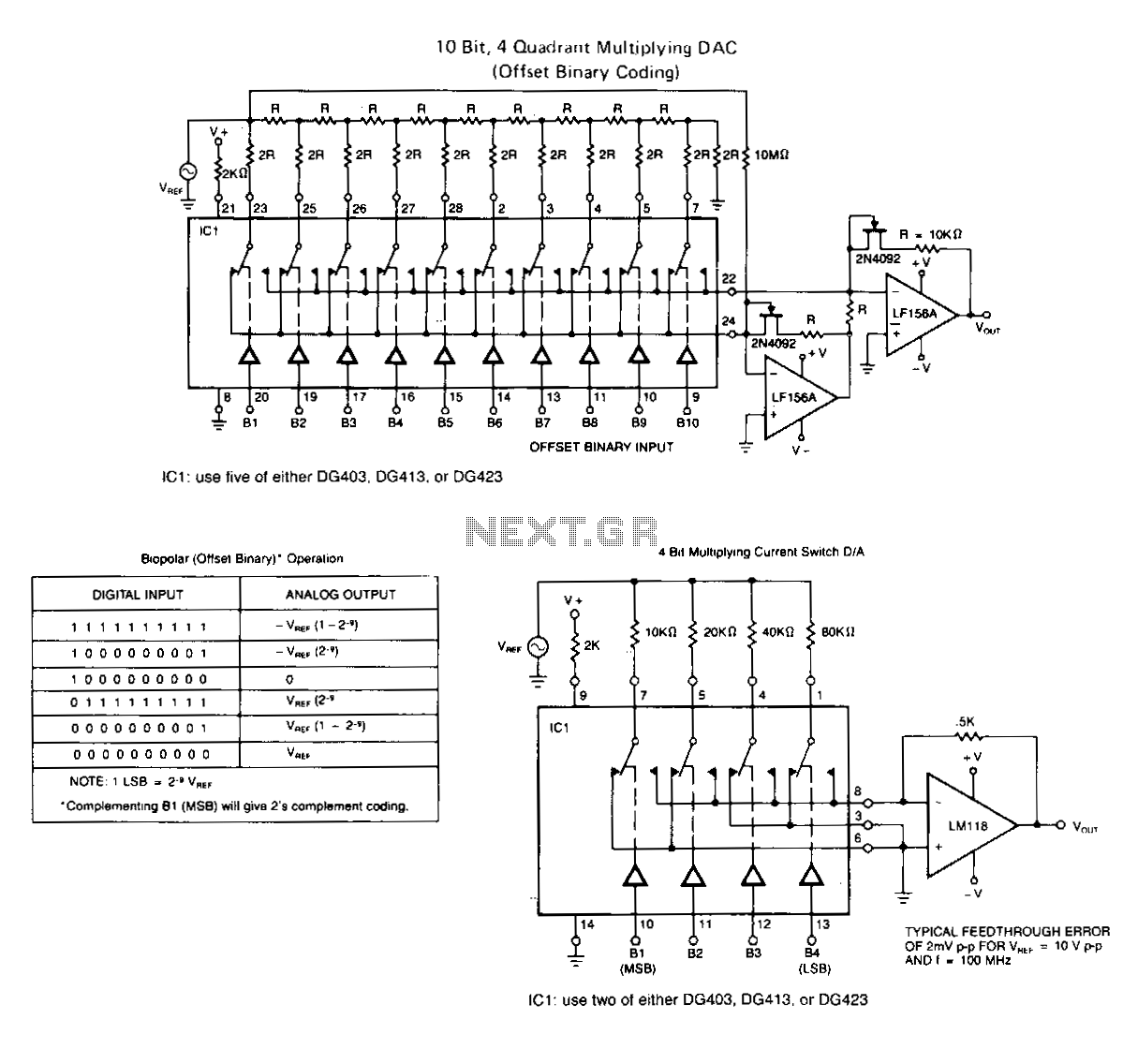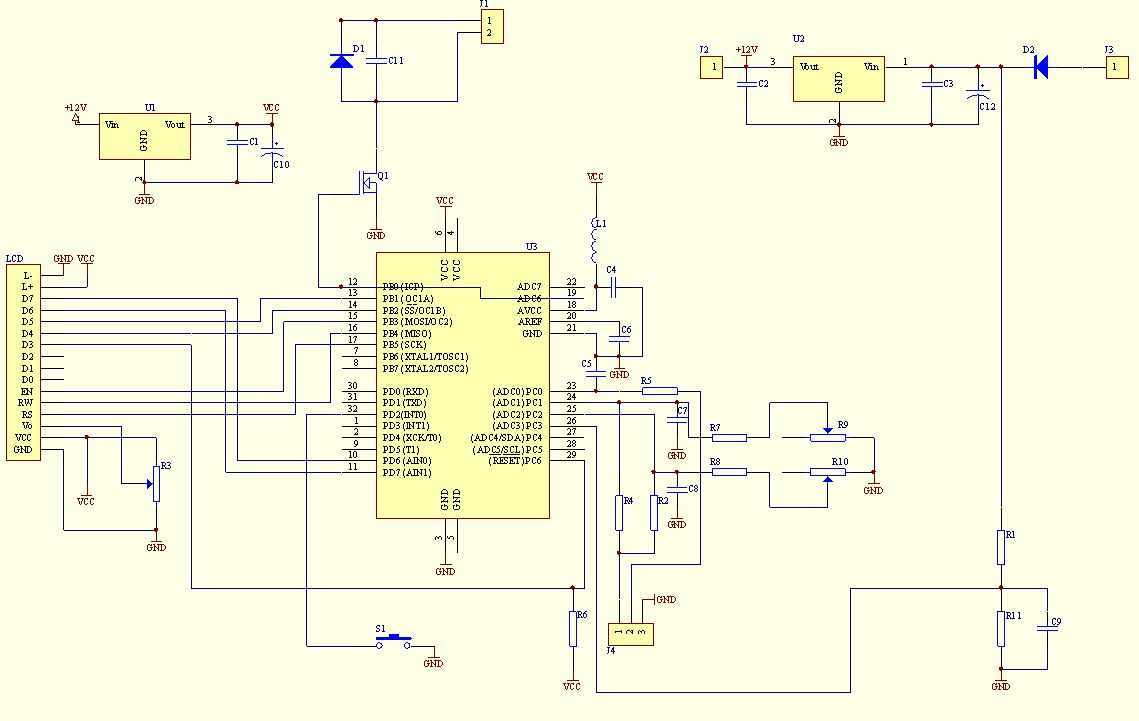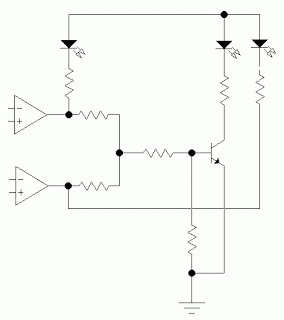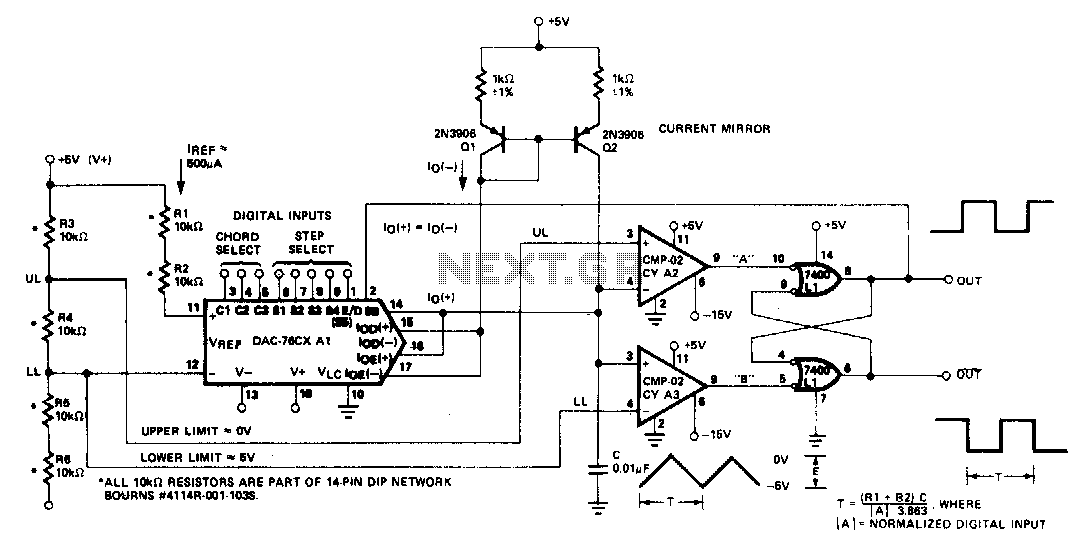
DIY Digital Thermometer

This DIY digital thermometer circuit can measure temperatures up to 150 °C with an accuracy of ±1 °C. The temperature is displayed on a 1V full-scale deflection (FSD) moving-coil voltmeter or digital voltmeter. An operational amplifier IC 741 (IC3) provides a constant current flow through the base-emitter junction of the NPN transistor BC108 (T1). The voltage across the base-emitter junction of the transistor is proportional to its temperature, making it a low-cost sensor. A silicon diode may also be used in place of the transistor. The small voltage variation across the base-emitter junction is amplified by a second operational amplifier (IC4) before the temperature is shown on the meter. Preset VR1 is utilized to set the zero reading on the meter, while preset VR2 adjusts the temperature measurement range. Operational amplifiers IC3 and IC4 operate on a regulated ±5V power supply, derived from a 3-terminal positive voltage regulator IC 7805 (IC1) and a negative low-dropout regulator IC 7660 (IC2). The entire circuit is powered by a 9V battery. The circuit should be assembled on a general-purpose PCB and enclosed in a small plastic box. Calibration of the thermometer is performed using presets VR1 and VR2. After calibration, the box should be positioned near the object whose temperature is to be measured.
This digital thermometer circuit employs a straightforward design, utilizing a combination of operational amplifiers and transistors to achieve accurate temperature readings. The primary sensing element is the NPN transistor BC108, which utilizes its base-emitter junction to measure temperature variations. The operational amplifier IC741 functions as a current source, ensuring that the transistor operates within its optimal range, thereby enhancing measurement accuracy.
The circuit's design allows for the use of a silicon diode as an alternative sensor, which can be beneficial in specific applications where a diode's thermal response may be preferred. The voltage change across the base-emitter junction, which is sensitive to temperature fluctuations, is amplified by a second operational amplifier (IC4). This amplification is crucial for translating small voltage variations into readable measurements on the voltmeter.
Calibration is essential for ensuring the accuracy of the thermometer. The presets VR1 and VR2 allow for fine-tuning of the zero reading and the measurement range, respectively, ensuring that the device can be adapted to different measurement scenarios. The power supply for the operational amplifiers is derived from a combination of a positive voltage regulator (IC7805) and a negative low-dropout regulator (IC7660), providing a stable ±5V supply necessary for optimal operational amplifier functionality.
The choice of a 9V battery as the power source ensures portability and ease of use, making this thermometer suitable for various applications, from laboratory settings to field measurements. The recommendation to assemble the circuit on a general-purpose PCB and enclose it in a plastic box emphasizes the importance of protecting the components from environmental factors and mechanical damage. Overall, this digital thermometer circuit exemplifies an efficient and cost-effective solution for temperature measurement, suitable for both amateur and professional applications.This diy digital thermometer circuit can measure temperatures up to 150 °C with an accuracy of ±1 °C. The temperature is read on a 1V full scale-deflection (FSD) moving-coil voltmeter or digital voltmeter.
Operational amplifier IC 741 (IC3) provides a constant flow of current through the base-emitter junction of npn transistor BC108 (T1). The vol tage across the base-emitter junction of the transistor is proportional to its temperature. The transistor used this way makes a low-cost sensor. You can use silicon diode instead of transistor. The small variation in voltage across the base-emitter junction is amplified by second operational amplifier (IC4), before the temperature is displayed on the meter. Preset VR1 is used to set the zero-reading on the meter and preset VR2 is used to set the range of temperature measurement.
Operational amplifiers IC3 and IC4 operate off regulated ±5V power supply, which is derived from 3-terminal positive voltage regulator IC 7805 (IC1) and negative low-dropout regulator IC 7660 (IC2). The entire circuit works off a 9V battery. Assemble the circuit on a general-purpose PCB and enclose in a small plastic box. Calibrate the thermometer using presets VR1 and VR2. After calibration, keep the box in the vicinity of the object whose temperature is 🔗 External reference
This digital thermometer circuit employs a straightforward design, utilizing a combination of operational amplifiers and transistors to achieve accurate temperature readings. The primary sensing element is the NPN transistor BC108, which utilizes its base-emitter junction to measure temperature variations. The operational amplifier IC741 functions as a current source, ensuring that the transistor operates within its optimal range, thereby enhancing measurement accuracy.
The circuit's design allows for the use of a silicon diode as an alternative sensor, which can be beneficial in specific applications where a diode's thermal response may be preferred. The voltage change across the base-emitter junction, which is sensitive to temperature fluctuations, is amplified by a second operational amplifier (IC4). This amplification is crucial for translating small voltage variations into readable measurements on the voltmeter.
Calibration is essential for ensuring the accuracy of the thermometer. The presets VR1 and VR2 allow for fine-tuning of the zero reading and the measurement range, respectively, ensuring that the device can be adapted to different measurement scenarios. The power supply for the operational amplifiers is derived from a combination of a positive voltage regulator (IC7805) and a negative low-dropout regulator (IC7660), providing a stable ±5V supply necessary for optimal operational amplifier functionality.
The choice of a 9V battery as the power source ensures portability and ease of use, making this thermometer suitable for various applications, from laboratory settings to field measurements. The recommendation to assemble the circuit on a general-purpose PCB and enclose it in a plastic box emphasizes the importance of protecting the components from environmental factors and mechanical damage. Overall, this digital thermometer circuit exemplifies an efficient and cost-effective solution for temperature measurement, suitable for both amateur and professional applications.This diy digital thermometer circuit can measure temperatures up to 150 °C with an accuracy of ±1 °C. The temperature is read on a 1V full scale-deflection (FSD) moving-coil voltmeter or digital voltmeter.
Operational amplifier IC 741 (IC3) provides a constant flow of current through the base-emitter junction of npn transistor BC108 (T1). The vol tage across the base-emitter junction of the transistor is proportional to its temperature. The transistor used this way makes a low-cost sensor. You can use silicon diode instead of transistor. The small variation in voltage across the base-emitter junction is amplified by second operational amplifier (IC4), before the temperature is displayed on the meter. Preset VR1 is used to set the zero-reading on the meter and preset VR2 is used to set the range of temperature measurement.
Operational amplifiers IC3 and IC4 operate off regulated ±5V power supply, which is derived from 3-terminal positive voltage regulator IC 7805 (IC1) and negative low-dropout regulator IC 7660 (IC2). The entire circuit works off a 9V battery. Assemble the circuit on a general-purpose PCB and enclose in a small plastic box. Calibrate the thermometer using presets VR1 and VR2. After calibration, keep the box in the vicinity of the object whose temperature is 🔗 External reference
Warning: include(partials/cookie-banner.php): Failed to open stream: Permission denied in /var/www/html/nextgr/view-circuit.php on line 713
Warning: include(): Failed opening 'partials/cookie-banner.php' for inclusion (include_path='.:/usr/share/php') in /var/www/html/nextgr/view-circuit.php on line 713





